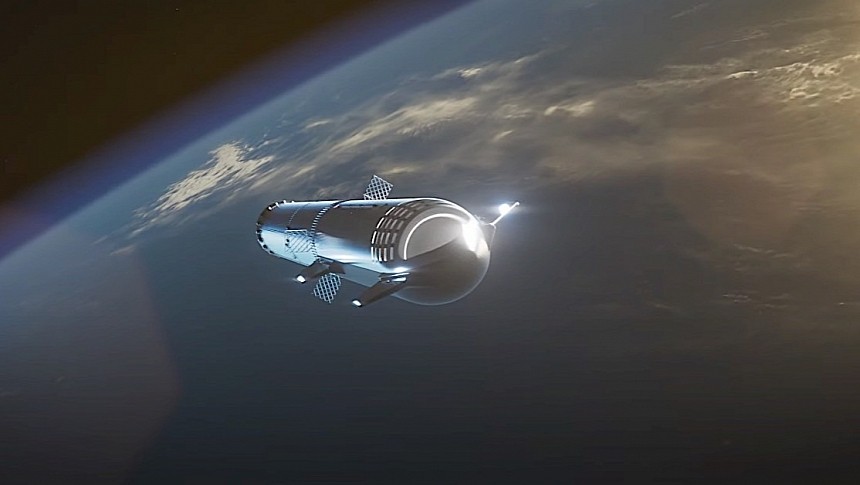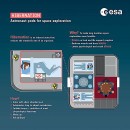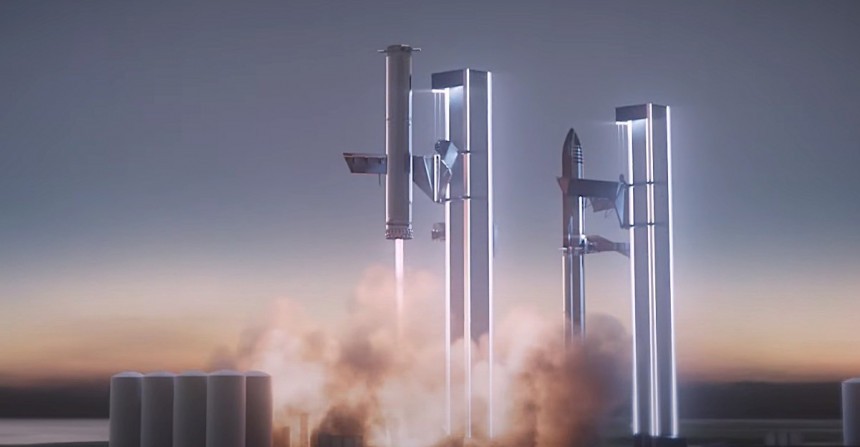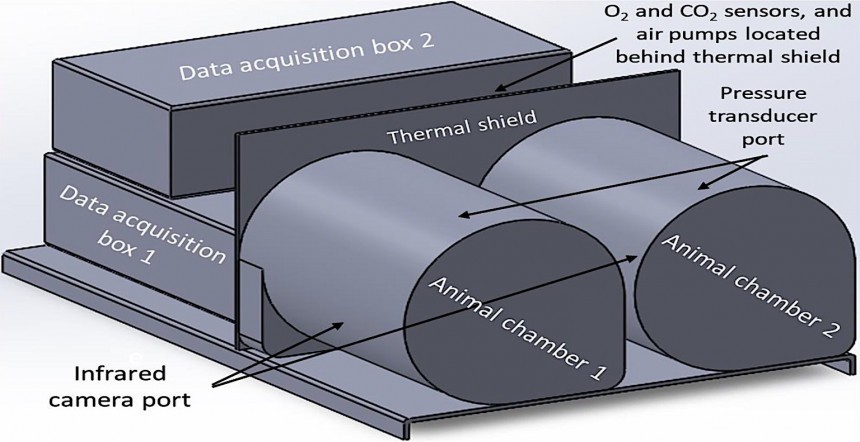Space exploration has been a human activity for 63 years now, a part of our lives ever since the Soviet Union sent into orbit a cosmonaut named Yuri Gagarin. And in the time that has passed since, our species has evolved greatly in this respect.
Yet there are many things we don't even dare dream of. For instance, absolutely all of our current space exploration efforts are focused on the celestial bodies of our own solar system. The only two spacecraft to have ever left it, the two Voyagers, only did that recently and are not even aimed at reaching some specific place outside of Sol.
What that means is that, at least for the moment, nobody is even trying to imagine interstellar travel, not by robotic spacecraft and certainly not with humans on board. And when no one is imagining stuff, nobody does anything either.
How many times have you watched sci-fi movies where interstellar travel was within the grasp of our species thanks to various hibernation and cryogenic technologies? How many times warp capabilities brought distant worlds within reach of space-going vehicles? How many times has teleportation saved the day?
If you were thinking those sci-fi movie ideas were inspired by real-world applications, think again. Hibernation, cryogeny, warp drives, and teleportation, none of them have been seriously researched, because no one really believes there's an immediate need for them.
We'll focus today on hibernation as a means of making long-distance space travel easier on astronauts. What that means is basically, somehow, allowing the human body to enter a state of very low energy consumption, one that reduces the basic human needs to their minimum.
Hibernation by whatever means would allow people to travel very long distances without feeling hunger, sleep, thirst, desire, and so on. Time would also pass a lot faster for those on board, eliminating fatigue, boredom, and even potential conflict.
At the beginning of December 2023 the International Space Station (ISS) celebrated its 25th anniversary in space. During its time up there it was responsible for countless discoveries and breakthrough research. None of that had anything to do with researching hibernation in microgravity, on any level (not even on rodents).
That may change in the little time the space station has left (it will be decommissioned early next decade) if an idea from biotech company Fauna Bio (more specifically one of its people, Ryan Sprenger) gets the required backing.
The company calls for the creation of a microgravity hibernation laboratory onboard the ISS that will be tasked with making the first steps in ensuring safe long-distance space travel.
The lab is meant for rodents and other such creatures, obviously. It will be a place capable of lowering the internal temperature to as low as 4 degrees Celsius (39 degrees Fahrenheit), able to supply air recirculation, and fitted with tools to measure key metrics like real-time total ventilation, body temperature, and heart rate.
The subject animals, which may or may not be capable of natural hibernation, would be enclosed in dedicated chambers tailored to their size. The goal of the lab is to get a better understanding of something called torpor.
Technically defined as a state of lethargy, both mental and physical, torpor is one of the key components of hibernation, as it significantly brings down the metabolic rate and diminishes bodily needs.
Ryan Sprenger and Fauna Bio believe hibernation can also have health benefits, aside from being a tool for long-distance travel. The research that will be conducted in the new ISS lab will focus on the mental and physical benefits of such an approach, including the effects of hibernation and low gravity on the preservation of muscle and bone and how it can be used as protection against radiation.
The lab is called Studying Torpor in Animals for Space-health in Humans (STASH), and it is being built together with BioServe Space Technologies. When ready, it will be integrated into something called the Space Automated Biological Laboratory (SABL), an incubator that is already on board the space station. It's unclear at this point when the integration will take place.
STASH will be used in stages, depending on when its discoveries may become usable. In the short term, it will focus on the "basic science of hibernation in a microgravity environment" meaning, among other things, finding protection against muscle and bone loss in space.
It will later move on to testing bioactive molecules that mimic hibernation, and then finding ways to induce synthetic torpor.
Last but not least, when our world gets around to it, it will be integrated into a crewed mission to Mars. Synthetic torpor will be tested as a means to fight the five main dangers of long-distance space travel (the so-called RIDGE), as identified by NASA: radiation, isolation, distance from Earth, gravity fields, and closed environments.
Separately, whatever the findings of the STASH research will be, chances are we humans will benefit from them here on Earth as well.
As a testimony to the idea's merits, NASA included the STASH in this year's list of projects supported through the Innovative Advanced Concepts (NIAC) program.
What that means is that, at least for the moment, nobody is even trying to imagine interstellar travel, not by robotic spacecraft and certainly not with humans on board. And when no one is imagining stuff, nobody does anything either.
How many times have you watched sci-fi movies where interstellar travel was within the grasp of our species thanks to various hibernation and cryogenic technologies? How many times warp capabilities brought distant worlds within reach of space-going vehicles? How many times has teleportation saved the day?
If you were thinking those sci-fi movie ideas were inspired by real-world applications, think again. Hibernation, cryogeny, warp drives, and teleportation, none of them have been seriously researched, because no one really believes there's an immediate need for them.
We'll focus today on hibernation as a means of making long-distance space travel easier on astronauts. What that means is basically, somehow, allowing the human body to enter a state of very low energy consumption, one that reduces the basic human needs to their minimum.
Hibernation by whatever means would allow people to travel very long distances without feeling hunger, sleep, thirst, desire, and so on. Time would also pass a lot faster for those on board, eliminating fatigue, boredom, and even potential conflict.
That may change in the little time the space station has left (it will be decommissioned early next decade) if an idea from biotech company Fauna Bio (more specifically one of its people, Ryan Sprenger) gets the required backing.
The company calls for the creation of a microgravity hibernation laboratory onboard the ISS that will be tasked with making the first steps in ensuring safe long-distance space travel.
The lab is meant for rodents and other such creatures, obviously. It will be a place capable of lowering the internal temperature to as low as 4 degrees Celsius (39 degrees Fahrenheit), able to supply air recirculation, and fitted with tools to measure key metrics like real-time total ventilation, body temperature, and heart rate.
The subject animals, which may or may not be capable of natural hibernation, would be enclosed in dedicated chambers tailored to their size. The goal of the lab is to get a better understanding of something called torpor.
Technically defined as a state of lethargy, both mental and physical, torpor is one of the key components of hibernation, as it significantly brings down the metabolic rate and diminishes bodily needs.
The lab is called Studying Torpor in Animals for Space-health in Humans (STASH), and it is being built together with BioServe Space Technologies. When ready, it will be integrated into something called the Space Automated Biological Laboratory (SABL), an incubator that is already on board the space station. It's unclear at this point when the integration will take place.
STASH will be used in stages, depending on when its discoveries may become usable. In the short term, it will focus on the "basic science of hibernation in a microgravity environment" meaning, among other things, finding protection against muscle and bone loss in space.
It will later move on to testing bioactive molecules that mimic hibernation, and then finding ways to induce synthetic torpor.
Last but not least, when our world gets around to it, it will be integrated into a crewed mission to Mars. Synthetic torpor will be tested as a means to fight the five main dangers of long-distance space travel (the so-called RIDGE), as identified by NASA: radiation, isolation, distance from Earth, gravity fields, and closed environments.
Separately, whatever the findings of the STASH research will be, chances are we humans will benefit from them here on Earth as well.
As a testimony to the idea's merits, NASA included the STASH in this year's list of projects supported through the Innovative Advanced Concepts (NIAC) program.
























